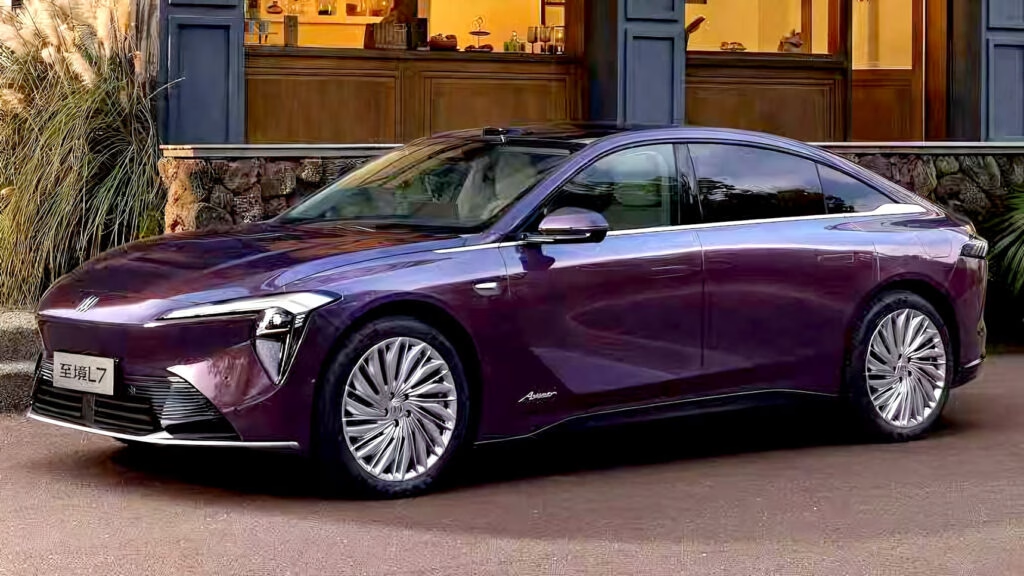What makes the Buick Electra L7 stand out in China’s crowded electric vehicle market?
The Electra L7 isn’t just another sedan with a plug. Buick’s latest flagship, launched under the new Electra sub-brand, is a statement about where the brand sees itself in China’s rapidly evolving automotive landscape. While Buick’s lineup in the US is heavy on crossovers and SUVs, the L7 shows that sedans still have real cachet in China—especially when they blend cutting-edge tech with luxury touches.
How does the Electra L7’s design compare to other premium EV sedans?
If you’re picturing a futuristic concept car, you’re not far off. The L7 borrows much of its design DNA from last year’s Electra L concept, but with a few tweaks to make it road-ready. The wing-shaped “Galaxy” headlights and turbine-inspired wheels give it a distinct presence, while the fastback silhouette isn’t just for show—it’s all about aerodynamics. At just over 5 meters long, the L7 is a touch longer than the Tesla Model S and Mercedes-Benz EQE, but a bit shorter than the BMW i5. That means plenty of room inside without feeling like you’re piloting a yacht.
What’s the interior experience like for drivers and passengers?
Step inside, and the minimalist vibe is unmistakable. The floating dashboard, dual digital displays, and a near-total absence of physical buttons create a clean, modern look. But this isn’t minimalism for its own sake—there’s real substance here. Nappa leather, four-zone “suspension” seats (with a zero-gravity function for the front passenger), and a 27-speaker sound system with headrest speakers and active noise cancellation all point to a focus on comfort and tech. The 50-inch augmented reality head-up display is a showstopper, projecting navigation and driving info right onto the windshield. And with AI-driven features running on Qualcomm’s latest chip, the L7’s infotainment and connectivity are as sharp as they come.
How does the Electra L7’s powertrain set it apart from competitors?
Here’s where things get interesting. The L7 rides on Buick’s new Xiao Yao architecture, which is flexible enough to support battery-electric (BEV), plug-in hybrid, and range-extender (EREV) setups. At launch, the L7 is offered as an EREV—a format that’s gaining traction in China for its blend of electric driving and long-range capability. The 1.5-liter turbo engine doesn’t drive the wheels; it acts as a generator for the 40.2 kWh battery, which in turn powers a 238 hp electric motor. The result? A claimed 0–100 km/h sprint in 5.9 seconds and a top speed of 200 km/h. But the real headline is the range: up to 1,400 km (870 miles) combined, with 302 km (188 miles) of pure electric driving under the CLTC cycle. That’s a game-changer for anyone with range anxiety.
What about charging and future EV options?
Buick isn’t stopping at the EREV. A fully electric version is on the way, featuring a CATL-supplied battery and a 900V electrical system. Translation: ultra-fast charging. GM says you’ll be able to add 350 km (218 miles) of range in just 10 minutes—enough time to grab a coffee and a snack. This kind of charging speed is still rare, even among premium EVs, and could be a real draw for tech-savvy buyers.
How does the L7 fit into Buick’s broader strategy in China?
The Electra L7 is just the beginning. Buick plans to roll out six new energy models in China over the next year, including SUVs and minivans built on the same flexible platform. The brand’s local lineup is already broader than what’s available in the US, reflecting the unique tastes and demands of Chinese consumers. And with over 10 million vehicles sold in China since 1998, Buick has the track record to back up its ambitions.
Is the Electra L7 coming to the US or other markets?
Short answer: no. The L7 is a China-exclusive, built at the SAIC-GM joint venture plant in Wuhan. Buick’s strategy is clear—tailor its offerings to local preferences, rather than trying to force a global one-size-fits-all approach. For now, American buyers will have to admire from afar.
What’s the price point, and how does it stack up to rivals?
GM is positioning the Electra L7 as a “300,000-class” vehicle, which puts it near ¥300,000 (about $41,800). That’s competitive with other premium electrified sedans in China, especially given the L7’s tech and luxury features. Final pricing will be announced when pre-sales open on September 28, with deliveries set for the end of 2025.
The big takeaway? Buick’s Electra L7 isn’t about perfection—it’s about smarter adjustments. By blending luxury, tech, and real-world usability, Buick is showing that the future of sedans in China is anything but boring. Start with one change this week—maybe it’s rethinking what you expect from a sedan—and you’ll likely spot the difference by month’s end.

